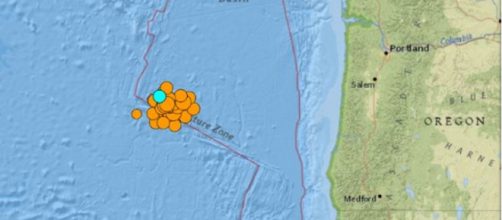Oregon is in one of the most active fault lines in North America. It faced as many as 40 earthquakes within 24 hours. These ranged in magnitude from 3.5 to 5.8 and led to concerns among the millions of residents in the region. There is some seismic history associated with an earthquake in any region. Such an incident usually leaves behind a trail of destruction and damages to the infrastructure. If it happens in a mountainous region, there could be a large-scale loss of houses and lives. However, the ones in Oregon were exceptions. They were located between 200-250 miles west of the coastal town of Newport.
Most of them remained undetected on land. Given the area's seismic history, it became a matter of concern. An official admitted that this area was most likely to face multiple earthquakes of magnitude more than 5.0 in a single day.
The fault line responsible for the quakes is the Blanco Fracture Zone. Oregon State University conducted an analysis and concluded that this zone is more active than the San Andreas Fault in California. It has seen hundreds of quakes since the 1970s. Their magnitudes were in excess of 4.0. An earthquake at a shallow depth is less harmful. In this case, there were a few tremors with a magnitude of 5.0 to 5.8. However, most of them occurred at a shallow depth of only about 6 miles (10 km).
Experts ruled out the possibilities of a big earthquake. As a seismologist said : "Today's quakes can be thought of as something like the mainshock and a swarm of aftershocks." She is Lucy Jones, and she added that since 1980 there had been more than 133 quakes of magnitude five or greater.
A seismograph can analyze an earthquake
An earthquake is the reaction of happenings below the surface of the earth. It disturbs the region's stability, and the depth of the quake determines the destructive power. Usually, an earthquake leads to damaged roads and bridges that result in the breakage of communication links. Buildings crumble and end up as rubble. Many areas get isolated from the mainstream, and the damaged roads hamper activities related to travel.
Moreover, uprooting of power lines could mean the non-availability of electricity. That would add to the woes because electricity is vital in every aspect of life from the kitchen to the bedroom. The USGS database reveals that since 1980, the number of quakes of magnitude 5.0 or more in the region has increased. These quakes have not triggered any tsunami alert.
The region is earthquake-prone
Oregon in North America happens to be in an earthquake-prone area. Way back in 1700, it witnessed one of the largest quakes in the United States. It happened close to land, and such quakes can trigger tsunamis apart from serious tremors. Even though the present quakes are among the most seismically active in North America, they are seldom destructive.


